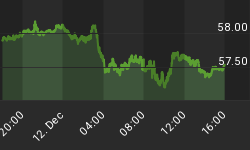The following was adapted from Bob Prechter's 2002 New York Times and Amazon best seller, Conquer the Crash - You Can Survive and Prosper in a Deflationary Depression.
Deflation requires a precondition: a major societal buildup in the extension of credit (and its flip side, the assumption of debt). Austrian economists Ludwig von Mises and Friedrich Hayek warned of the consequences of credit expansion, as have a handful of other economists, who today are mostly ignored. Bank credit and Elliott wave expert Hamilton Bolton, in a 1957 letter, summarized his observations this way:
In reading a history of major depressions in the U.S. from 1830 on, I was impressed with the following:
(a) All were set off by a deflation of excess credit. This was the one factor in common.
(b) Sometimes the excess-of-credit situation seemed to last years before the bubble broke.
(c) Some outside event, such as a major failure, brought the thing to a head, but the signs were visible many months, and in some cases years, in advance.
(d) None was ever quite like the last, so that the public was always fooled thereby.
(e) Some panics occurred under great government surpluses of revenue (1837, for instance) and some under great government deficits.
(f) Credit is credit, whether non-self-liquidating or self-liquidating.
(g) Deflation of non-self-liquidating credit usually produces the greater slumps.
Self-liquidating credit is a loan that is paid back, with interest, in a moderately short time from production. Production facilitated by the loan - for business start-up or expansion, for example - generates the financial return that makes repayment possible. The full transaction adds value to the economy.
Non-self-liquidating credit is a loan that is not tied to production and tends to stay in the system. When financial institutions lend for consumer purchases such as cars, boats or homes, or for speculations such as the purchase of stock certificates, no production effort is tied to the loan. Interest payments on such loans stress some other source of income. Contrary to nearly ubiquitous belief, such lending is almost always counter-productive; it adds costs to the economy, not value. If someone needs a cheap car to get to work, then a loan to buy it adds value to the economy; if someone wants a new SUV to consume, then a loan to buy it does not add value to the economy. Advocates claim that such loans "stimulate production," but they ignore the cost of the required debt service, which burdens production. They also ignore the subtle deterioration in the quality of spending choices due to the shift of buying power from people who have demonstrated a superior ability to invest or produce (creditors) to those who have demonstrated primarily a superior ability to consume (debtors).
Near the end of a major expansion, few creditors expect default, which is why they lend freely to weak borrowers. Few borrowers expect their fortunes to change, which is why they borrow freely. Deflation involves a substantial amount of involuntary debt liquidation because almost no one expects deflation before it starts.
For more on deflation, including the following topics, see Elliott Wave International's free guide to deflation, inflation, money, credit and debt. There, you can also download two free chapters from Conquer the Crash.
Learn more about these six important topics:
- What is Deflation and When Does it Occur?
- Price Effects of Inflation and Deflation
- The Primary Precondition of Deflation
- What Triggers the Change to Deflation?
- Why Deflationary Crashes and Depressions Go Together
- Financial Values Can Disappear in Deflation
















